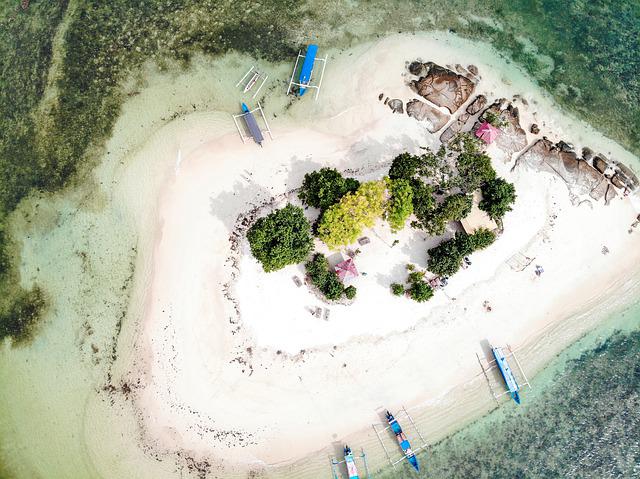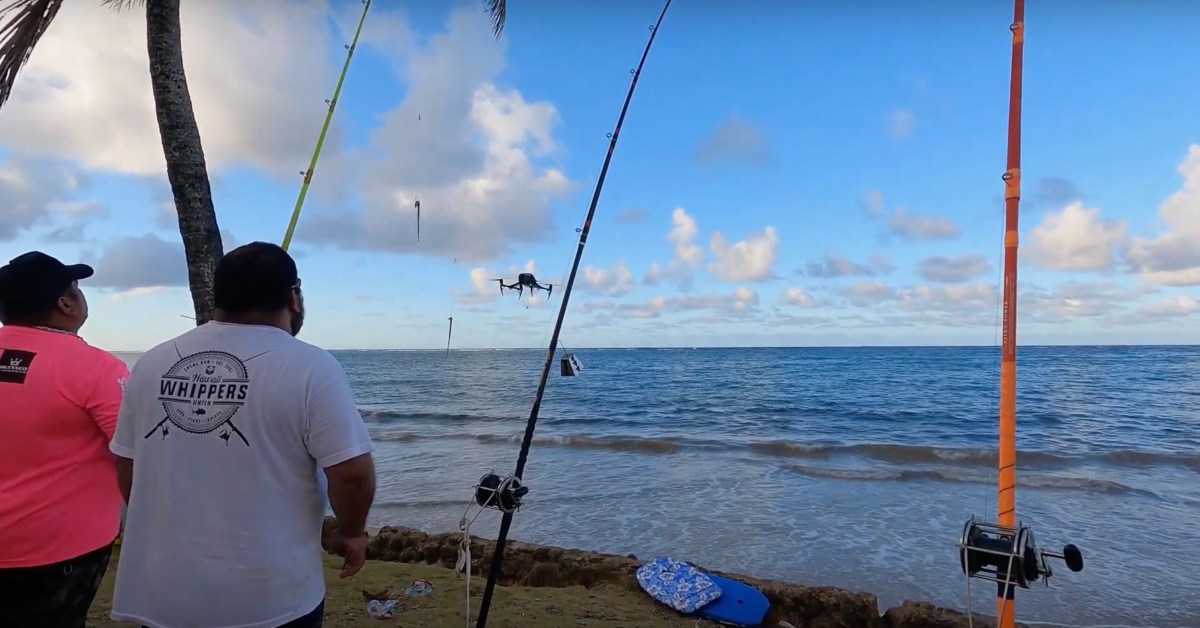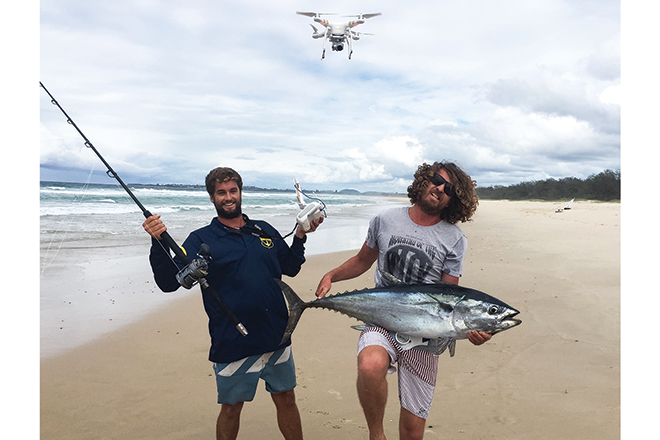
If you are a passionate fisherman, and you live in Australia you can use a drone for an aerial view of your property's waters. Drones come with various features like a mechanical payload release, an angle adjustable camera, GPS positioning system, and a GPS receiver. Fishing lines can be purchased that are extremely stable and secure. The SKY RIGGER drone is one such example.
The drone fishing line SKY RIGGER can be used for spotting fish.
The SKY RIGGER allows you to fish remotely from your drones using a flexible fishing line system. The system features two rotating leg clamps that can attach to various drone models. The release mechanism is designed with a bayonet-style connection and a cam-lock arm to open the line clamps quickly. Sky RIGGER is unlike other drones and can be used for all types of fishing.
The SKY RIGGER includes an automatic release system for fish that strike your fly. You can also release the line manually with your hand or rod. This feature is available on all models of the SKY RIGGER. It is highly recommended that you buy a Phantom 3 before buying the new SKY RIGGER. These are the pros and cons of this new line system.
It comes with a mechanical payload.
A good drone's mechanical payload release is one of its most important characteristics. Many of them allow anglers to quickly and easily release their fishing line. Some models lack a release mechanism. Instead, the user must "yank" the fishing line to release the drone from the line. This can be awkward, especially for people who don't like using their hands to release line.

A payload release mechanism is also an important feature. The drone should have the ability to release its payload when it strikes a fish. Practice catch and release fishing before you attempt this method. This is because the fish can't be simply pulled to shore and released into the sea. Many people have had good experiences with the DJI Phantom drone. However, this technology has not yet reached the level of fishing drones that are available on the market.
It has a GPS positioning system
Rippton is an Australian-Dutch joint venture that specializes technology-oriented products for fishing. Its goal is improve anglers' success by creating products that enhance the fishing experience. Rippton's Mobula drone includes a GPS positioning and remote release. The Mobula is able to hold bait on the surface, resist kite clips and is environmentally friendly.
It is light at 3 pounds and can take off for 18 minutes. It has a high tech GPS system that can be controlled from as far as 2,000 meters away. It can fly for up to 1000m, which is half a mile. It can take high-quality pictures of its surroundings thanks to its point of interest function. Its high-resolution camera allows you to get great views of fish.
It includes a failsafe safety feature
Aerokontiki has an emergency feature that allows it to monitor the battery level and release the fishing line if necessary. It will return to dry ground if it experiences a battery failure and continue its mission. It operates with industrial-grade flightcontrollers, and it can work anywhere without requiring calibration. This drone is also waterproof, so you can use it even in the most difficult water spots.

FAQ
Is it possible to fly my drone in a local park?
Yes, drones are allowed to fly in parks across the globe. However, some countries do not allow flying drones at parks due to safety concerns. You can fly drones legally in these places.
Where can a drone be purchased?
There are many types of drones available online. Some people prefer to buy drones online via Amazon, eBay and Walmart. Others prefer to purchase their drones directly at the manufacturer.
What US states are drones legal?
You can legally operate a drone for hobby purposes. Federal Aviation Administration (FAA), has issued guidelines that allow you to use small unmanned aircraft systems (UASs). These UASs must be registered with the FAA before they can be flown. The FAA also allows commercial operators to fly these devices if certain conditions are met.
What kind batteries does a drone need?
Lithium-ion batteries are the most common type of battery for drones. The typical drone draws between 3 and 6 volts.
Statistics
- According to Indeed, a drone pilot gets paid $25.73 per hour on average in the US. (dronesgator.com)
- With the top 10% making over $100/h and the bottom 10% making as low as $10/h. (dronesgator.com)
- According to industry research from ZipRecruiter , there are 10 cities where the typical salary for a Drone Pilot job is above the national average. (dronesgator.com)
External Links
How To
How to Fly Drones With Beginners
A drone is an unmanned aerial vehicle that can be remotely controlled and used for surveillance, aerial photography, film production, research, and other hobby purposes. Drones are a technology that has been around since World War II. DJI's Phantom series quadcopters were first commercially available in 2010. There have been many drones made since then. These range from beginner-friendly drones like Parrot AR Drone 2.0 to more advanced multi-rotor craft like DJI Mavic Pro.
There are many options for flying a drone.
-
Remote control - This method uses a control device attached to your hand, which enables you to steer the drone through its flight path. There are two main types of controllers: On/Off switches (like a radio) and joysticks.
-
Manual Control- This allows you to control your drone remotely via GPS coordinates. Follow the instructions of the app to track the exact location you want the drone go.
-
Autonomous Flight – This is when the drone handles all the piloting tasks. It's basically flying autonomously without any human intervention. A drone must have a builtin camera and sensors capable to capture images and other data.
-
Triggered flight - This is similar to manual control except that the pilot sets up a preprogrammed route and the drone follows the route until it reaches its destination. Once the programmed route is completed, the drone lands automatically and returns back to the base.
-
Landing Gear – A few drones come with landing gear. This allows them land safely in the event of losing power or running out of battery.
-
Goggles - Some pilots wear goggles to protect themselves from debris while operating.
-
Camera - Some drones are equipped with cameras allowing you to capture photos and videos from above.
-
Obstacles - Some drones can be equipped with obstacle avoidance systems that prevent them from crashing into obstacles.
-
Speed – Some drones can reach speeds in excess of 40 mph.
-
Battery Life - Most drones can last between 20 minutes to 3 hours, depending on how much power you're using.
-
Range - Some drones can travel upto 30 miles depending on their models.
-
Power source: Some drones will require an external power source while others can be powered by internal batteries.
-
Weight – Some drones are less than one pound, while other models can be up to four pounds.
-
Size - Drones come in many sizes, from small gadgets that fit in one's hands to large craft that weigh more than 50 lbs.
-
Price - Drones come in a variety of price categories, including high-end models which can run into the thousands and low-cost options that can start at $100.